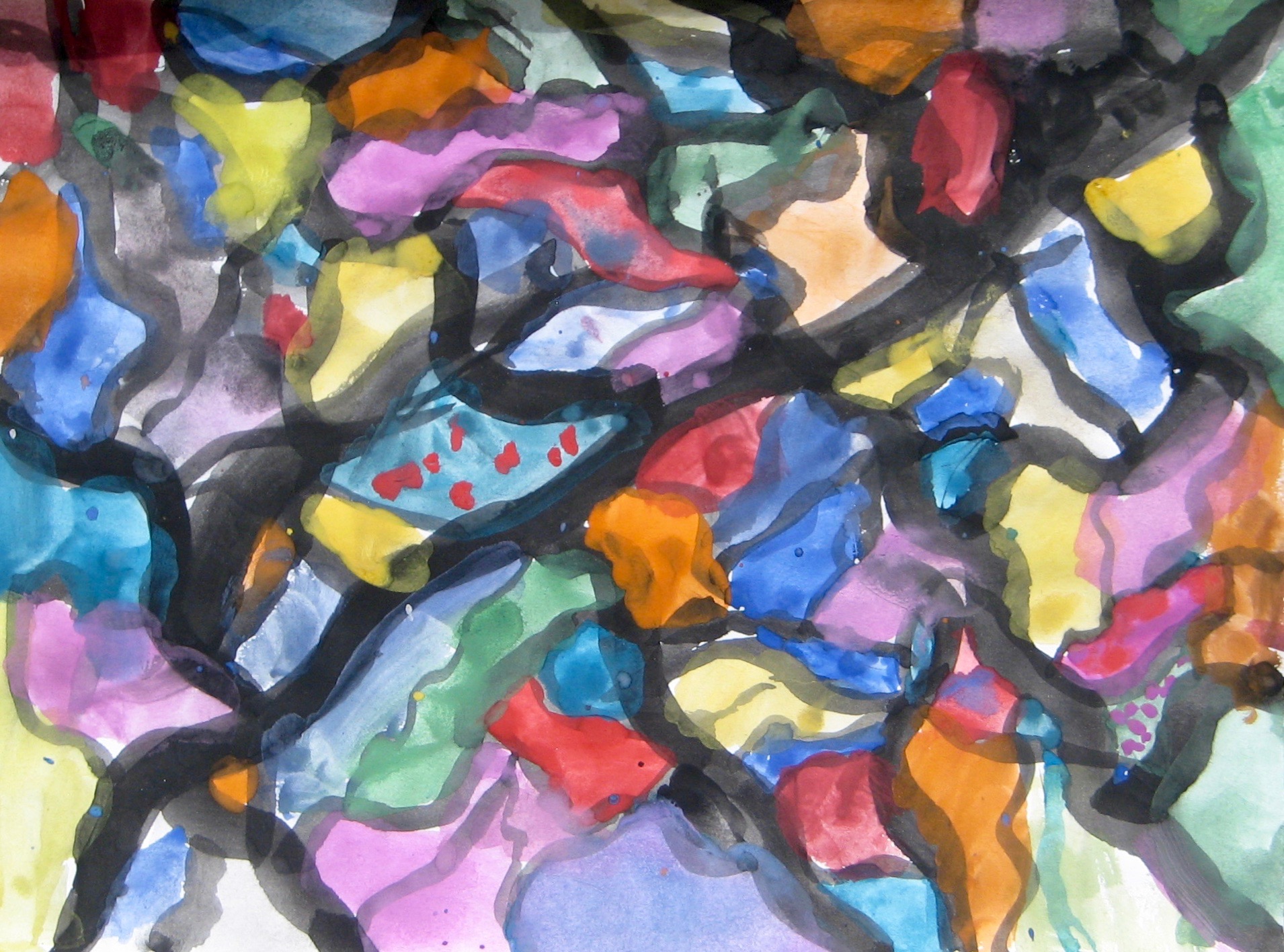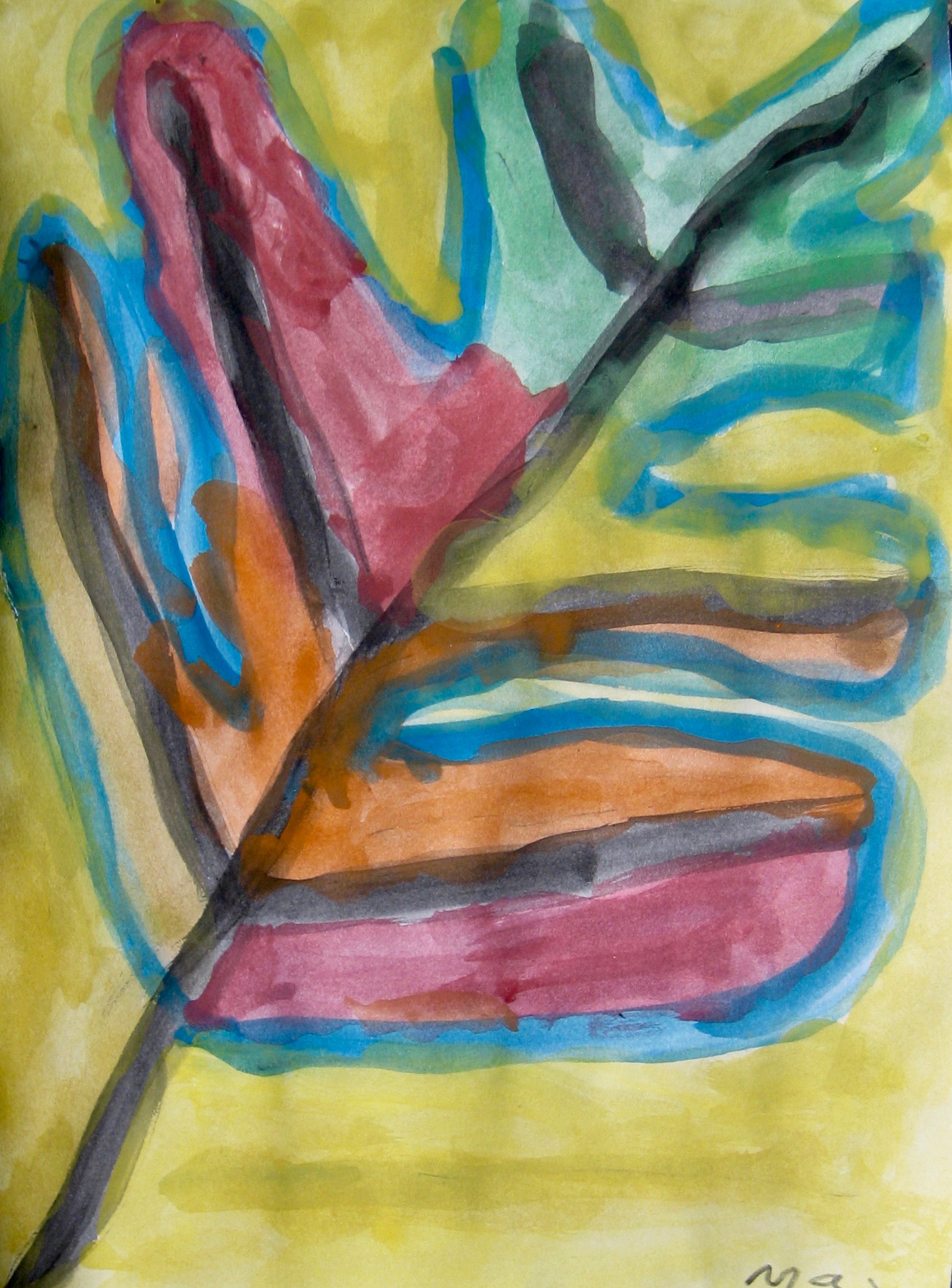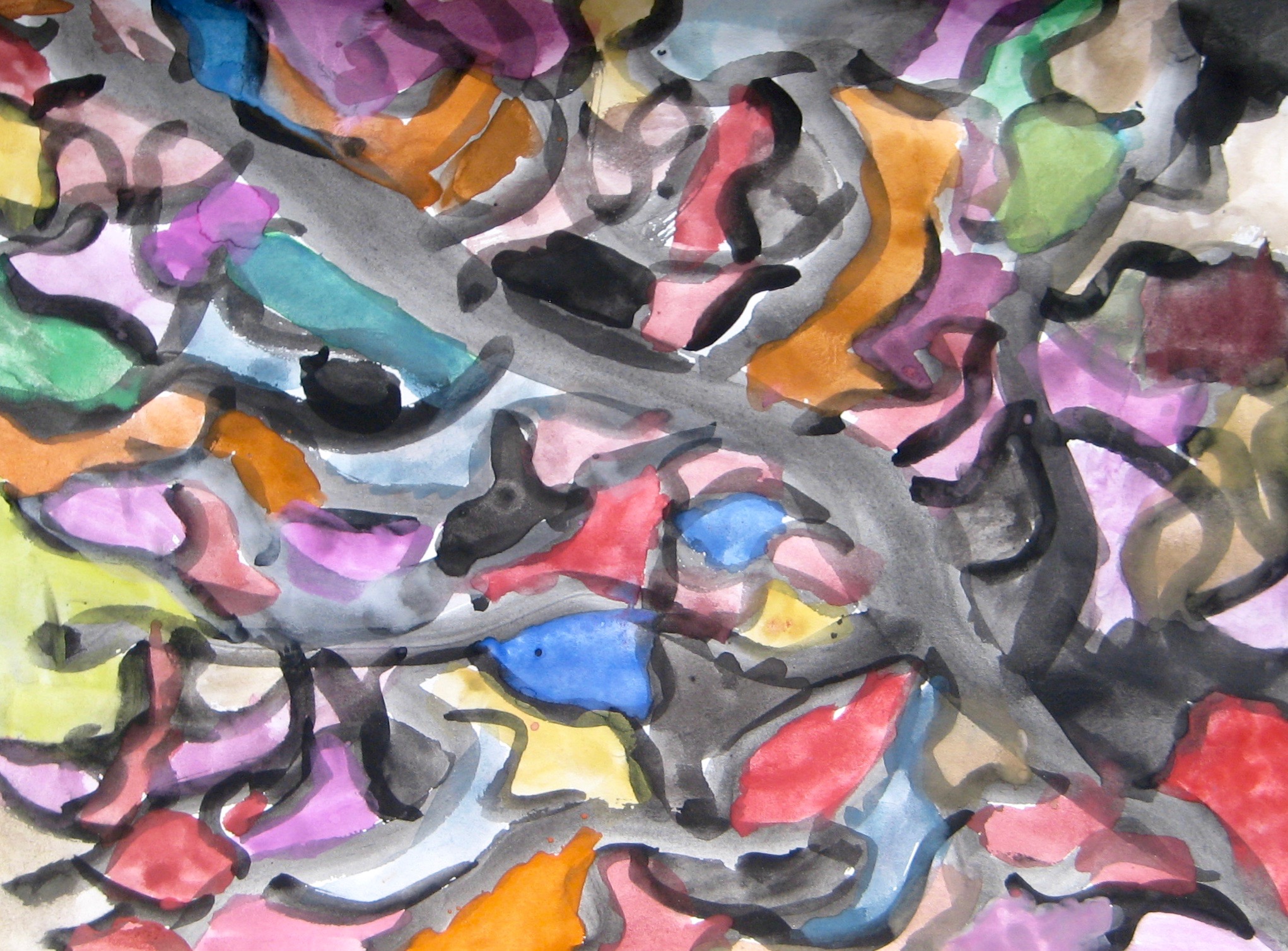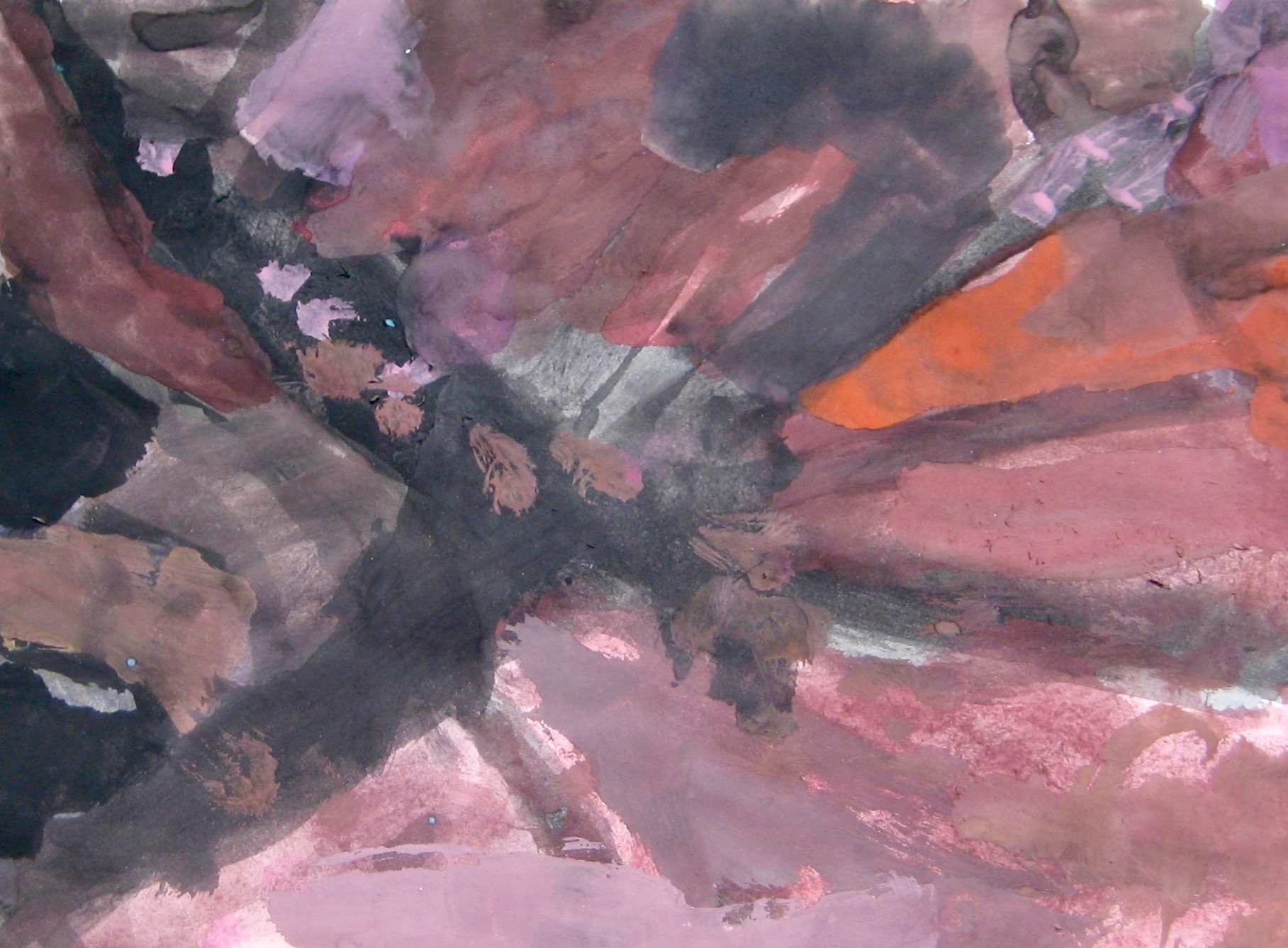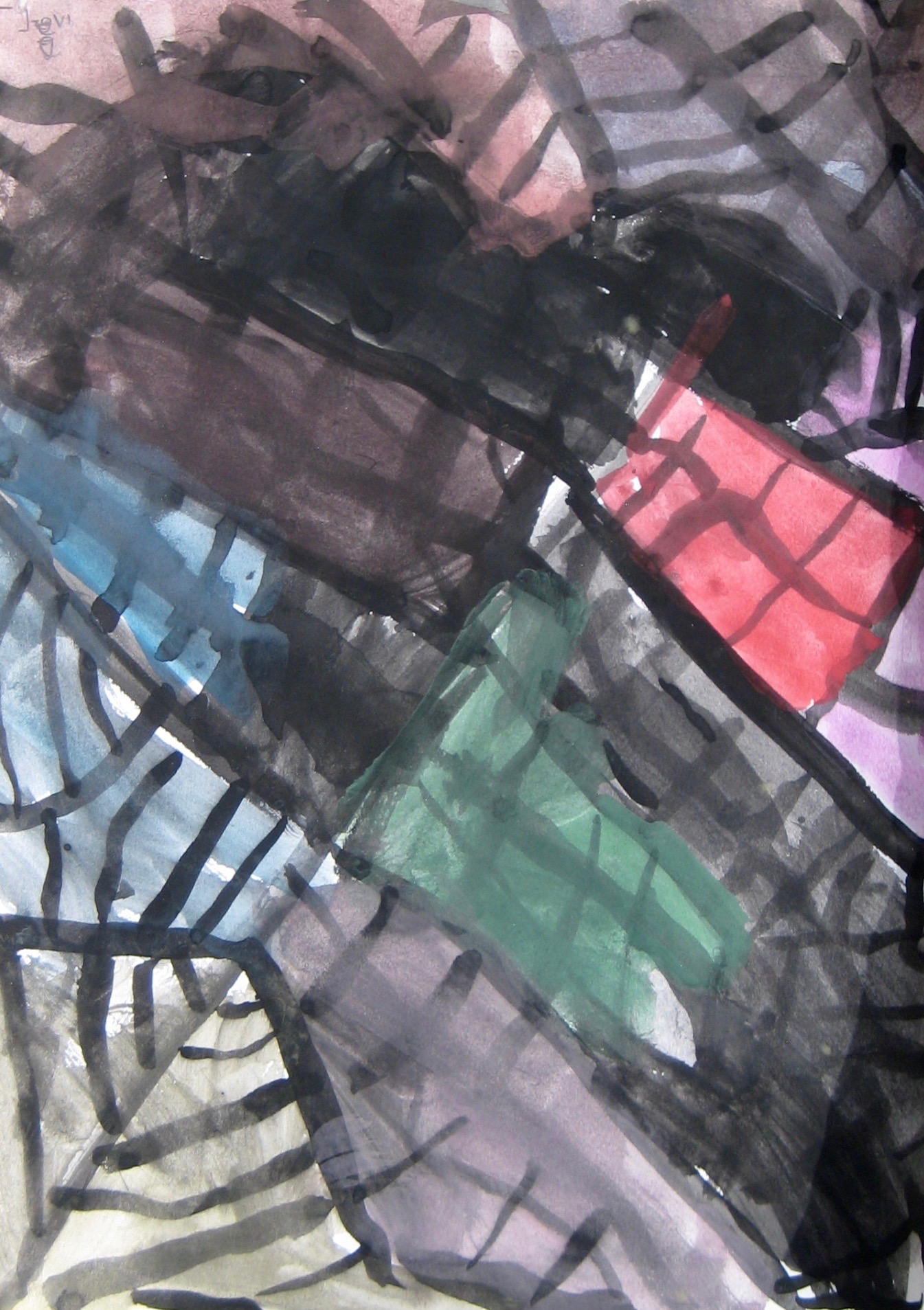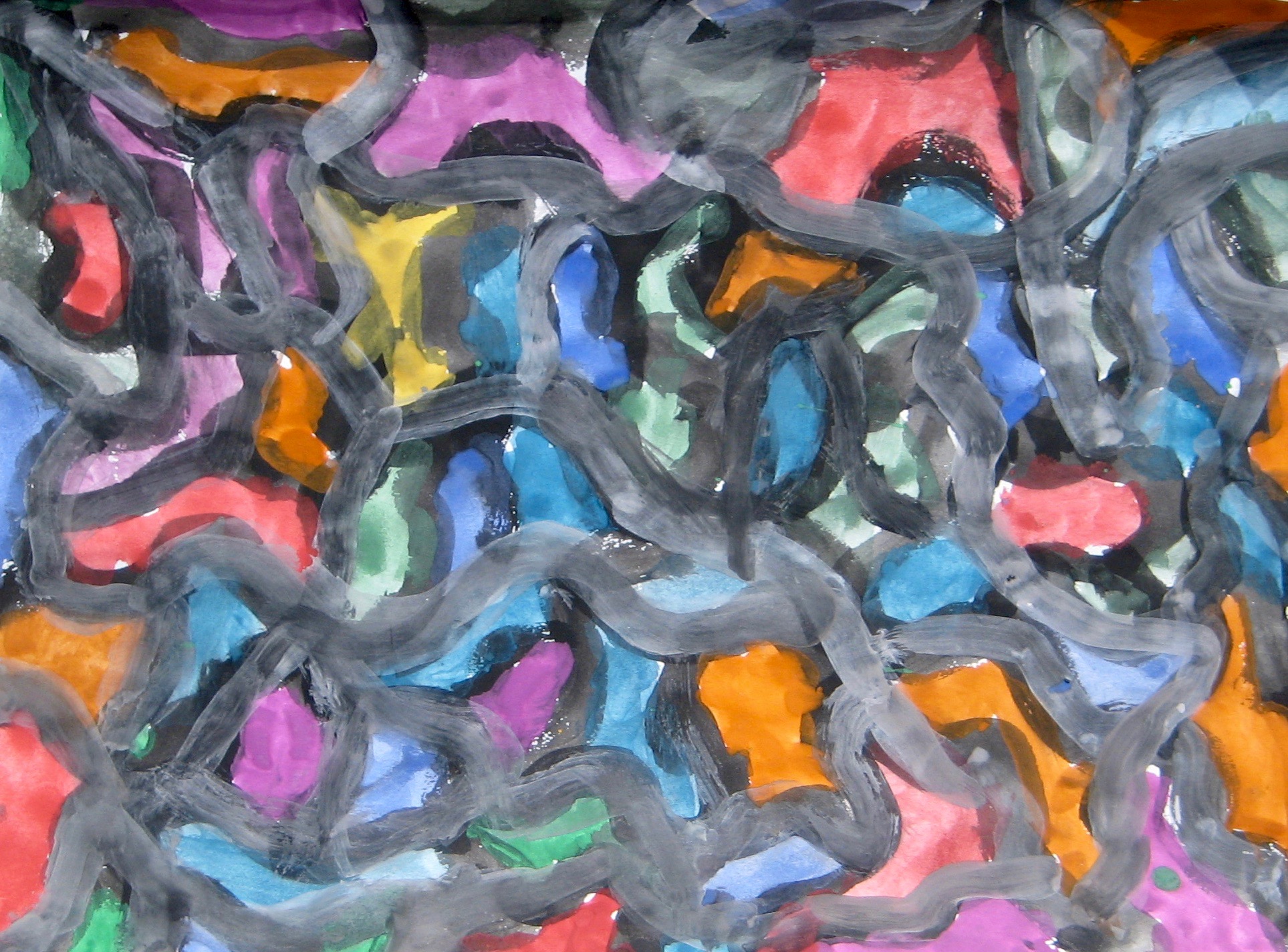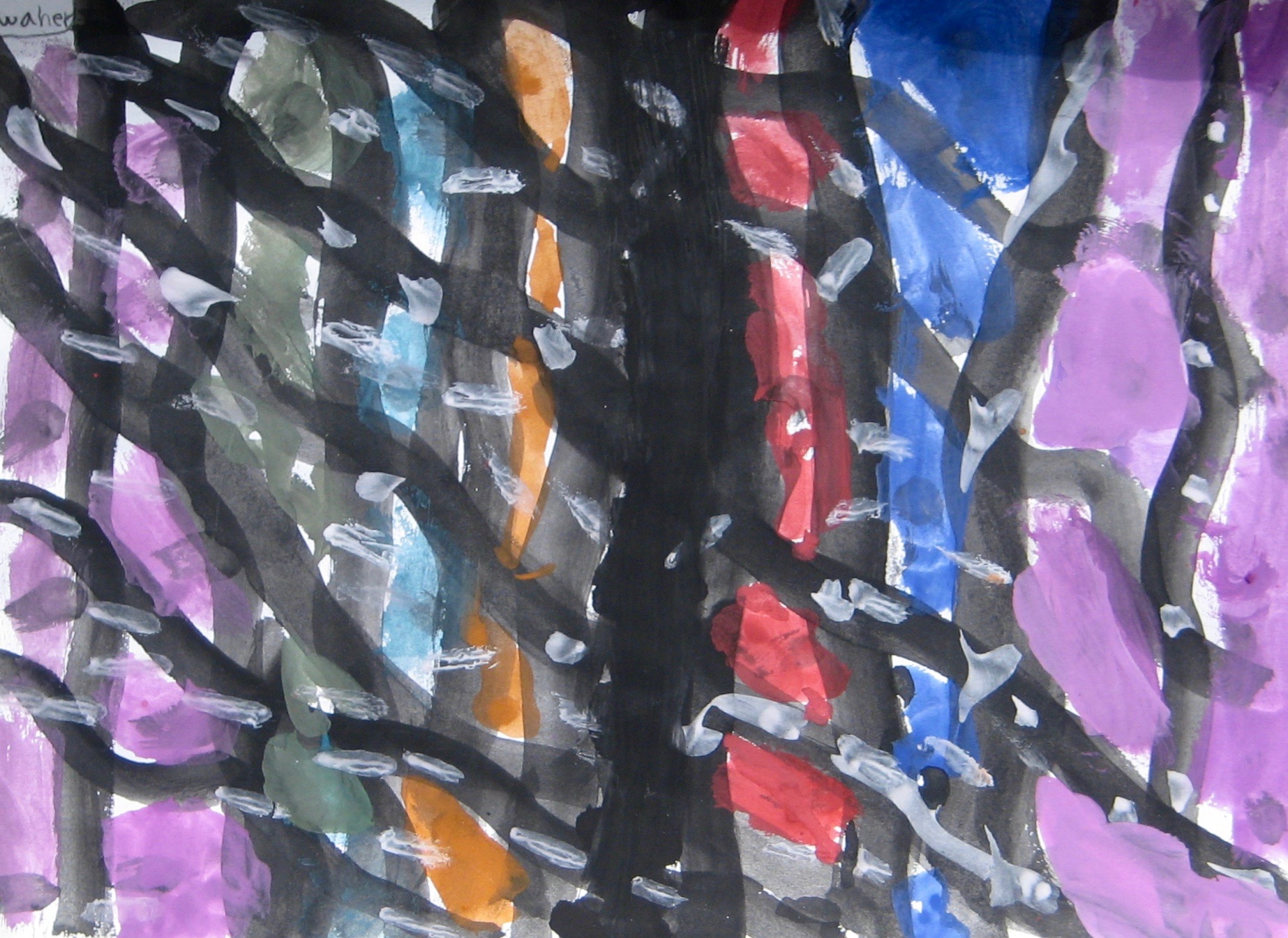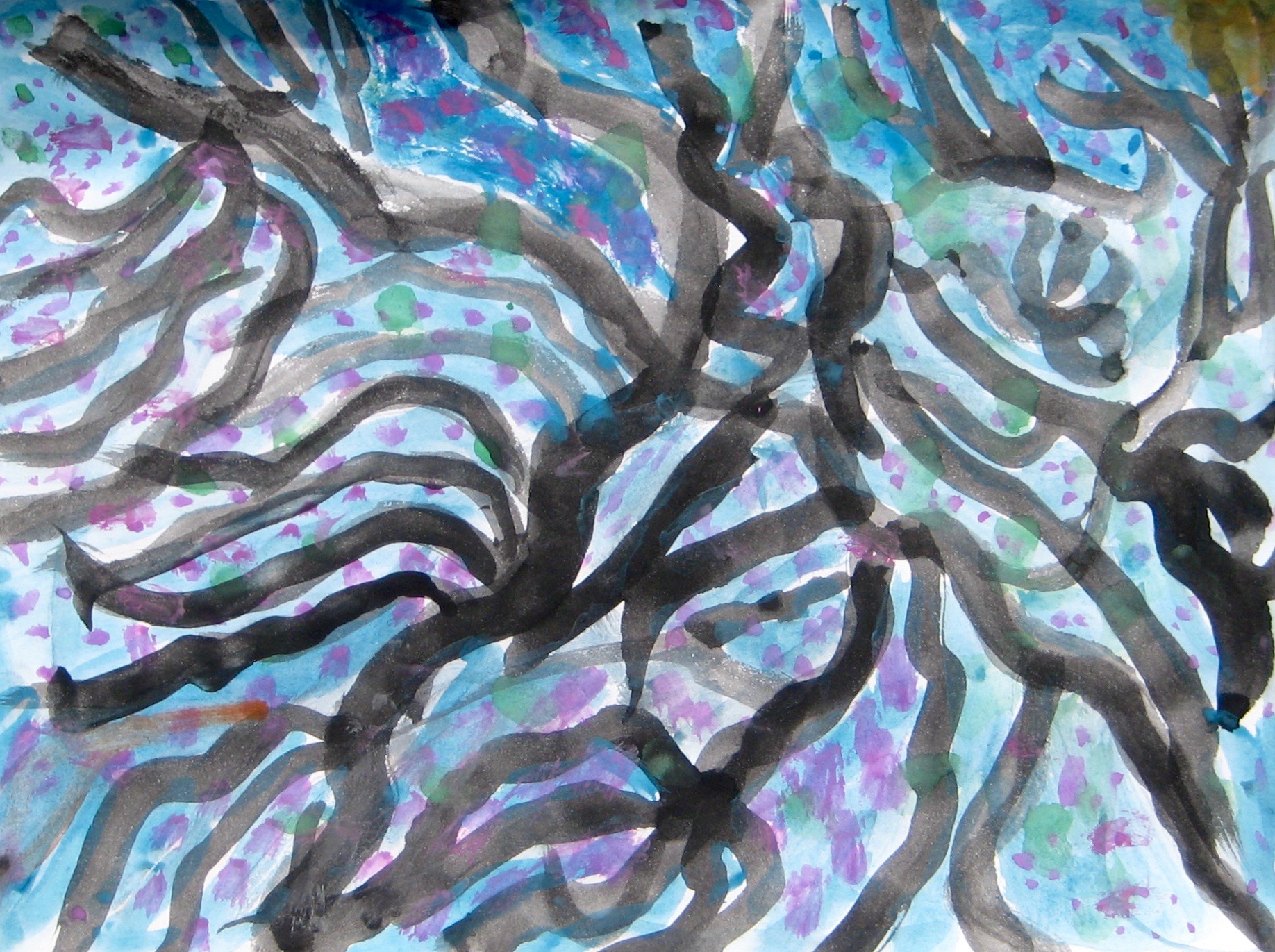Fall Leaf Paintings: Using the Branching Vein Structure in a Painting
Tempera Paint on White Paper
Listening to the rain today, trickling down the gutters, pattering on the roof, whooshing under passing car tires--I enjoy the sounds of rain as much as the look of rain and as I sit here writing, the sound of rain reminds me of one reason why I love water-based paints and being in the classroom with students while they paint: it's the sound . . . the sound of brushes swishing in the water containers. A gentle, slightly bubbly, rippely, splashy sound. And while I'm on the subject of sound . . . the other wonderful sound in the art classroom: a room full of students drawing with crayons on paper is like the sound of rain falling on the roof.
On to why thoughts about the sounds of painting are on my mind . . . the second grade students just finished their first painting of the school year. The students explored using the branching vein structure of leaves to create a painting with the tempera cakes. (Click here to read more about the leaf unit.) Tempera cakes are similar to watercolors, but because they are made from tempera paint, they can be transparent when watered down and opaque if used thickly.
I picked out a few paintings for you to see here and am putting up more in the hallway by Ms. Julin and Mrs. Papciak's classrooms. As you can see, the paintings are beautiful, bright and show a variety of ways the students interpreted the subject.
A note of gratitude for the inspiration for this lesson:
As you know from my previous posts, I've been working on starters. I recently came across a book at the library called Painting Your Way Out of a Corner by Barbara Diane Berry. In this book, Berry gives practical exercises to help readers get started on the creative journey through journal painting. I could hardly wait to try one of these exercises with the students. Since the second grade students were working on leaves, Organic Painting/Branching Out on page 75 was the perfect one to try first and so began the fall leaf paintings you see above!
A little bit about the starter and painting techniques . . .
The paintings were completed in three class sessions so students could experience painting next to and over the dry paint colors. The black paint lines were done the first day and the color was added the next two class sessions. In this way, students experienced wet-on-wet and wet-on-dry.
The starter for this painting was the black paint branching structure. I demo'd possible brush and paint techniques students might use while painting but left it up to them to make their own decisions on whether to use the techniques or not or use the branching structure as demo'd or not. The only 'must do' was to cover the entire surface of the paper with paint (no white paper left showing.) But as you might notice in the last painting above, this student left some white paper showing with great effect . . . so much for the 'must do'! How can I argue with 'breaking the rule' when it is accomplished in such a lovely, lively, thoughtful way!
In the demo prior to setting students off to paint, students observed:
- Using a wet brush to draw a branching structure in black paint and how to keep the brush wet with a pointed tip
- Lightly touching the brush tip to the paper to make dots, pressing down for larger ovals, brushing in larger areas of color and wet-on-wet effects
- Swishing to rinse and wiping on the side of the water container
- Swishing a wet brush on the tempera cakes to wet the cake and pick up paint



